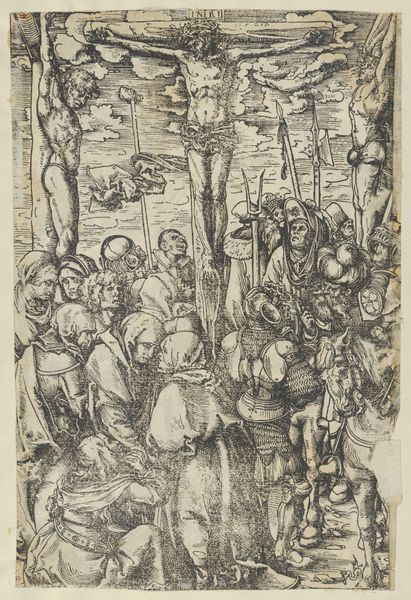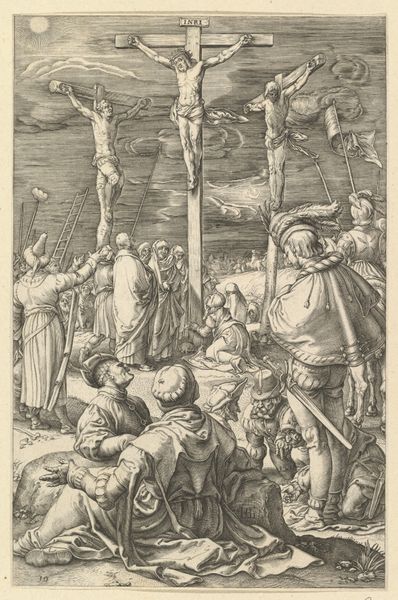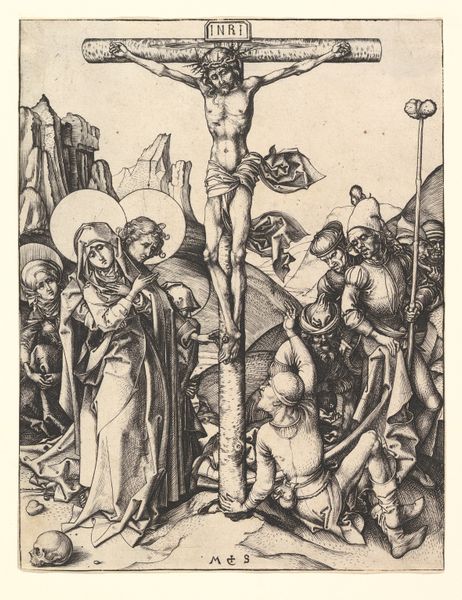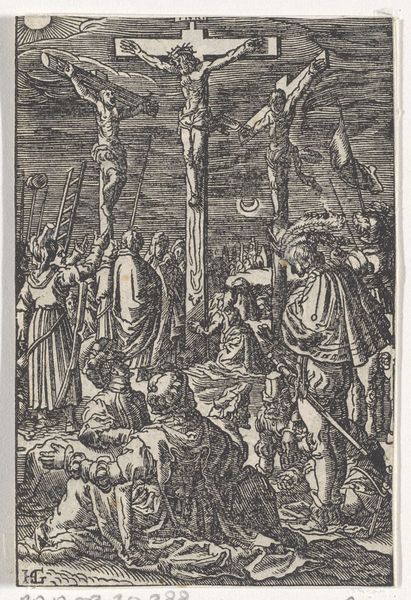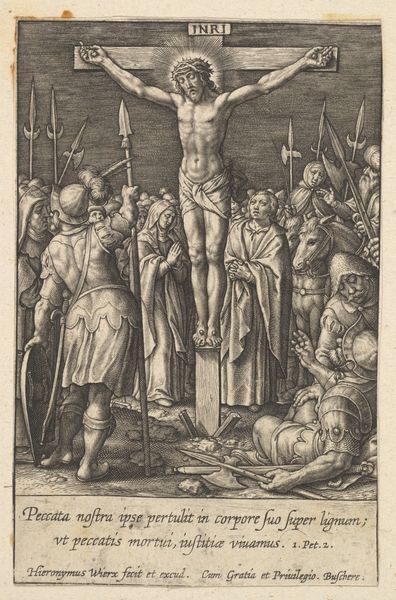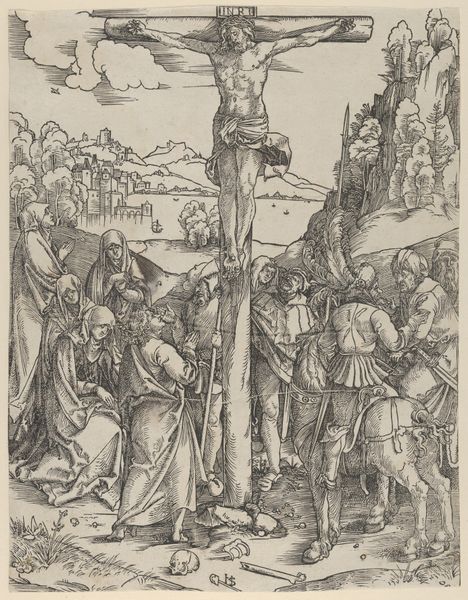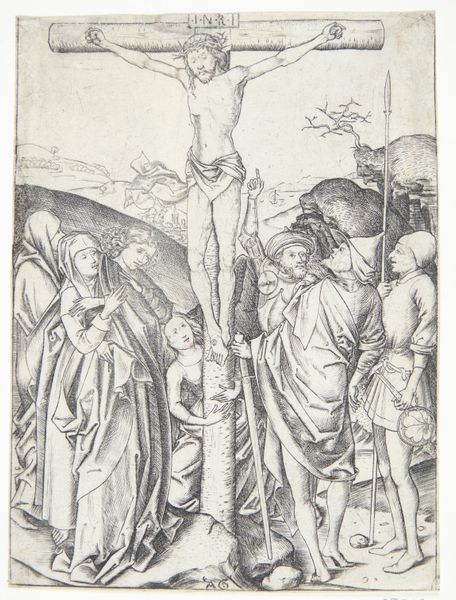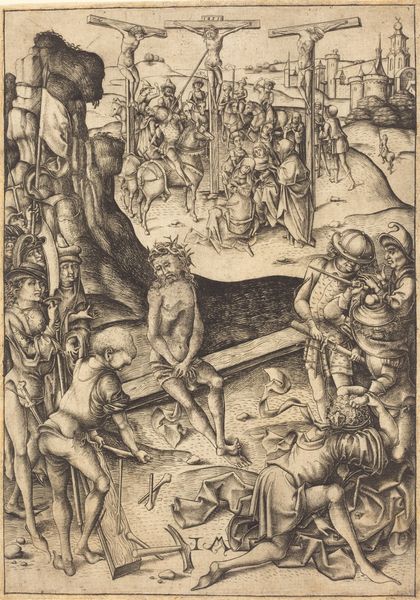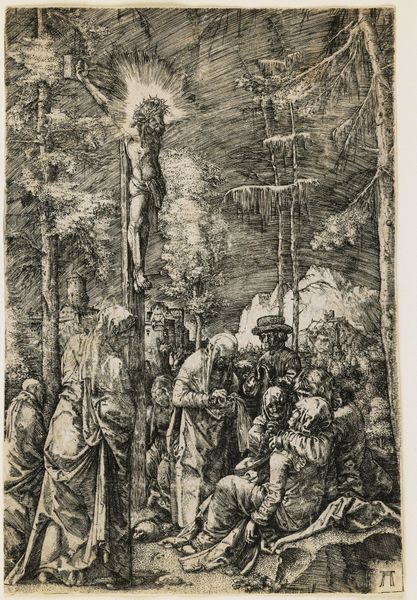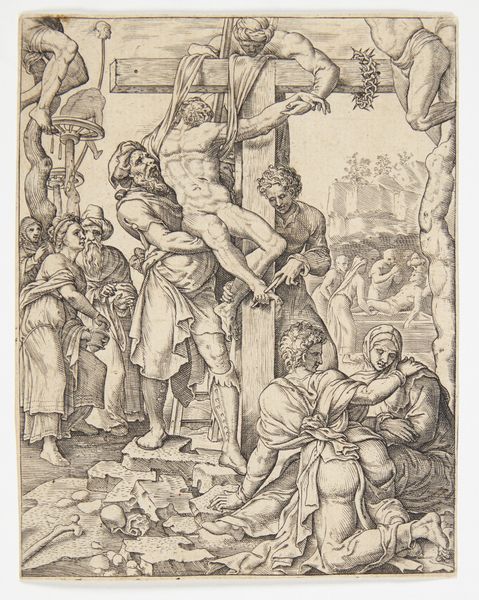
print, woodcut
# print
#
figuration
#
woodcut
#
history-painting
#
northern-renaissance
Copyright: National Gallery of Art: CC0 1.0
Curator: Lucas Cranach the Elder's woodcut, "The Crucifixion," likely created before 1509, confronts us with a dense and emotionally charged scene. Editor: It hits you immediately, doesn’t it? The raw intensity, the starkness of the black and white... the cross seems almost swallowed by the crowd, both in numbers and sheer presence. Curator: Exactly. It's crucial to recognize the socio-political context of Cranach's work. This was a period of immense religious and social upheaval. The image depicts not only the biblical scene but also subtly comments on power structures, on justice and injustice. How does that interplay affect your understanding? Editor: Well, the focus is clearly on labor, right? Look at the act of producing this image: the meticulous cutting required to create the intricate lines of the woodcut itself mirrors the toil, the physical suffering depicted in the image. The labor is both creative and destructive. Curator: The work reflects a nuanced representation of different groups within society at the time. The reactions of onlookers: we see sorrow, indifference, even a kind of perverse enjoyment. Consider how this complex layering speaks to issues of complicity and responsibility during that period... and perhaps even today. Editor: And the quality of materials also dictates what the artwork will look like, the use of ink, wood etc all contribute to the image. I'm especially intrigued by how the dense texture creates a tangible sense of the crowd pressing in— the sheer physical weight of humanity surrounding this central act of supposed redemption. The rough, almost crude lines speak to a populist aesthetic; there's nothing polished or idealized here. It mirrors the lives of everyday people. Curator: Right! This approach provides access for broad audiences to question what and whom the established order seeks to punish and why. But if Cranach prompts critical introspection, what is his own role and how is it influenced by cultural conditions? Editor: We can see the marks of labor etched into every detail of this work— the grain of the wood and then the mark of the woodcutter. It underscores how deeply enmeshed making is within complex structures of class and cultural capital. This makes me wonder what the costs of material choices might have been for the people living at that time? Curator: That close reading reminds us of how artwork can challenge accepted histories. It pushes back on assumptions of who held authority, and who had the ability to critique it through cultural creation. Editor: Agreed. This reminds me to really see art, the literal making involved, not just interpret narratives or meaning in them, but what processes they might represent.
Comments
No comments
Be the first to comment and join the conversation on the ultimate creative platform.
